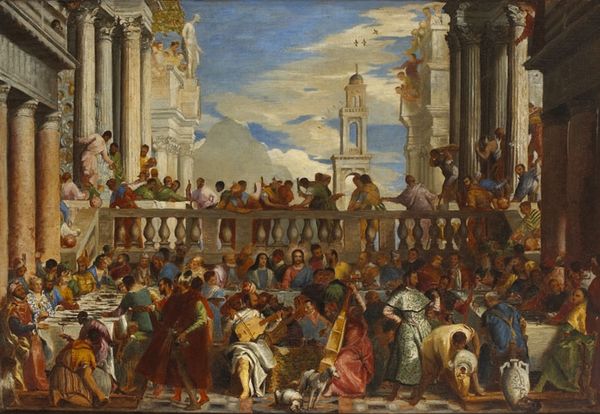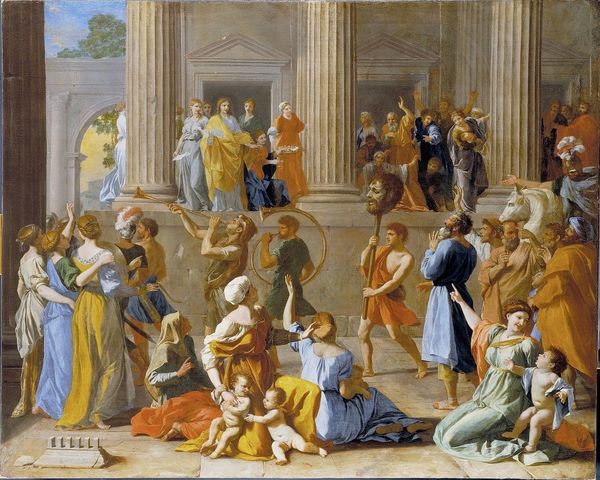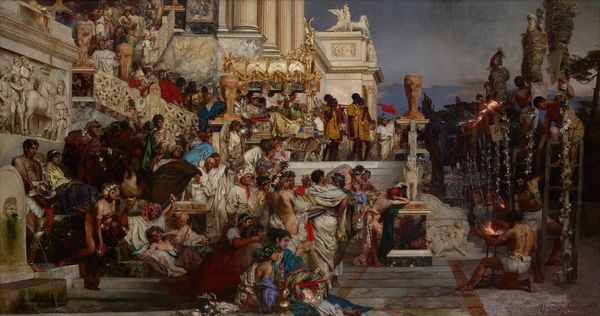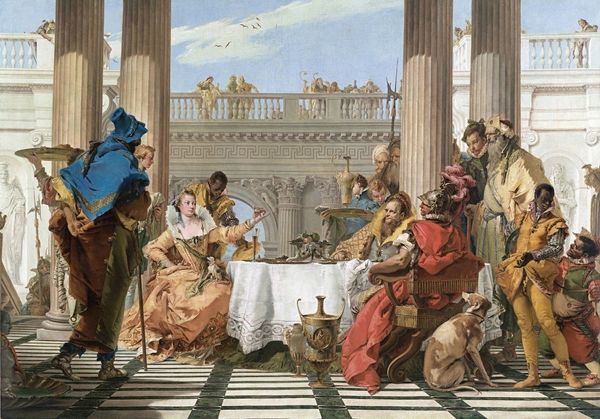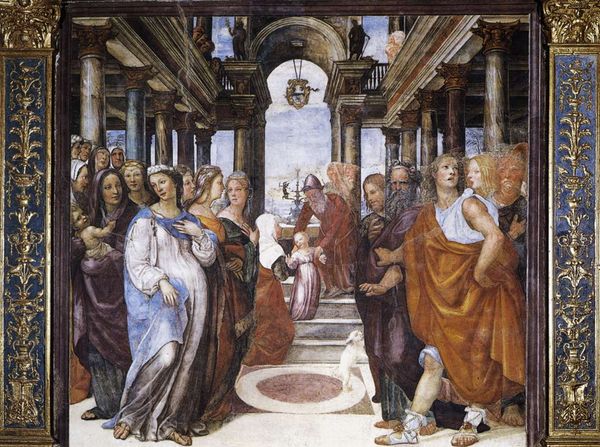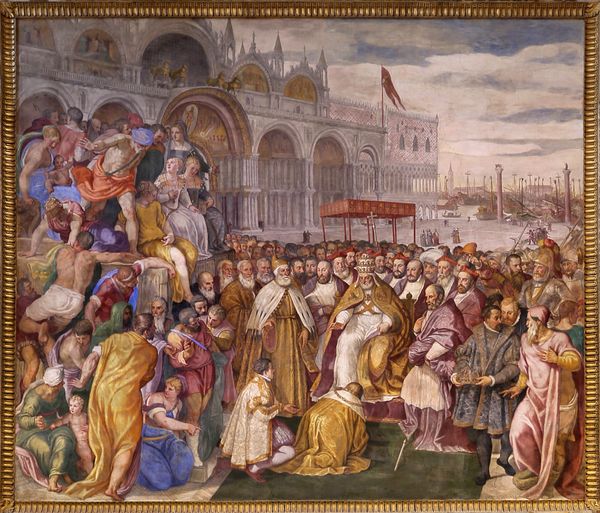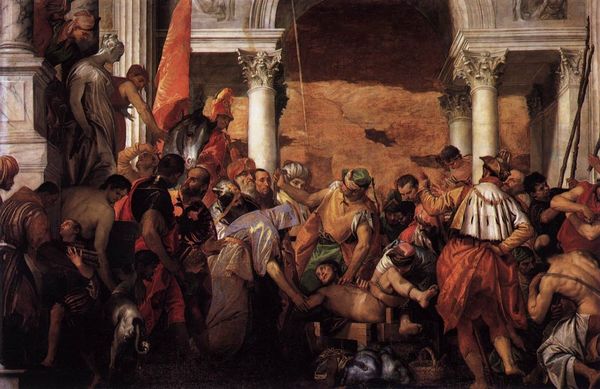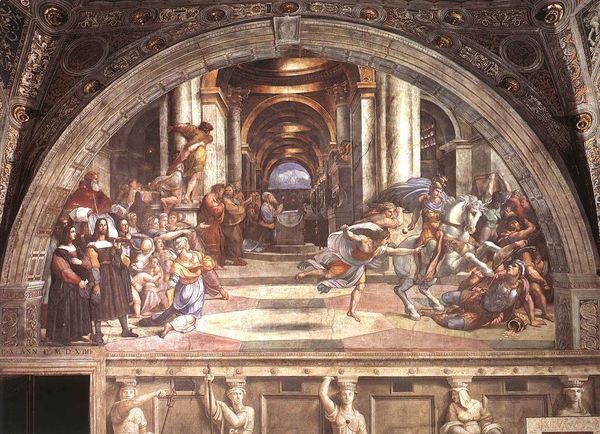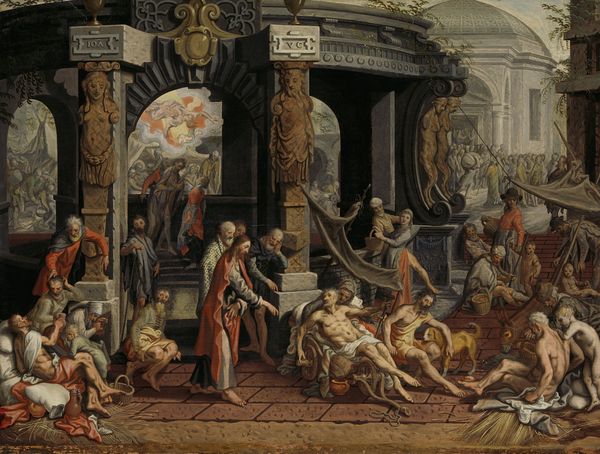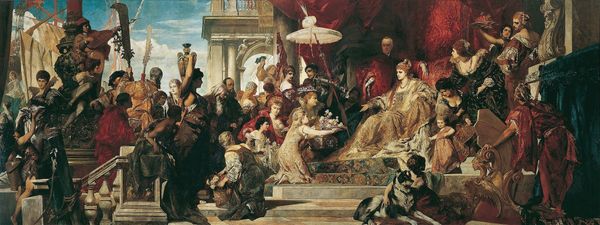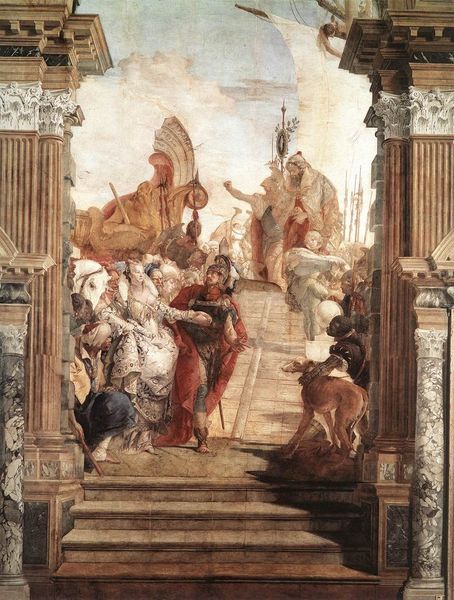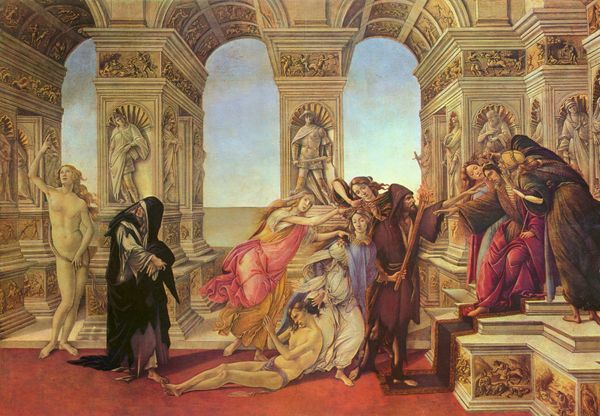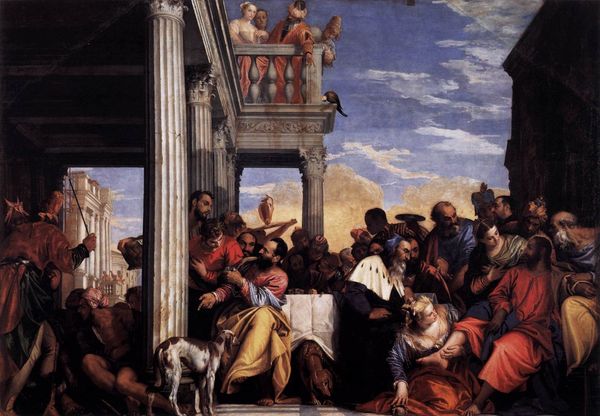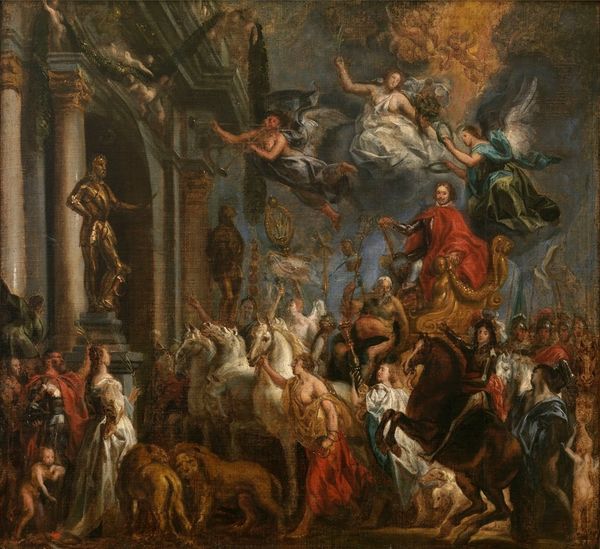
painting, oil-paint
#
venetian-painting
#
allegory
#
painting
#
oil-paint
#
figuration
#
oil painting
#
genre-painting
#
history-painting
#
academic-art
#
italian-renaissance
Copyright: Public Domain: Artvee
Curator: Immediately, the vastness overwhelms me. It’s a vibrant, almost chaotic scene. The figures seem crammed into the space, yet there’s an undeniable sense of celebratory energy. Editor: This monumental oil painting is "The Wedding at Cana" by Paolo Veronese, created in 1562. What you're sensing is quintessential Venetian painting – grandeur on a massive scale with incredibly vivid color. Veronese has masterfully depicted the biblical scene of Jesus turning water into wine at a wedding feast. Curator: Indeed, the compositional structure is remarkably adept at corralling such a multitude of forms. The architecture, especially the classical columns and statuary, provide a sort of scaffolding that the eye can navigate. I wonder, though, about the seeming anachronisms. Editor: The context here is everything. Veronese situates this biblical narrative within a contemporary Venetian setting, teeming with portraits of nobility, musicians, and even himself! It speaks volumes about the powerful families commissioning these works. It places them at the center of sacred stories and classical splendor. It wasn't just about devotion; it was about status, patronage, and the assertion of Venice's cultural dominance. Curator: Interesting. But observe how the painting is stratified. The upper reaches populated by smaller figures on balconies and levels. These vertical lines serve to heighten the visual drama, amplifying the scene's dynamism, and yet also contributing to the overwhelming impression you had, to its initial...crowdedness. It uses color not just realistically but symbolically; notice the way vermilion draws attention amidst paler colors; what that says? Editor: You're right. Veronese wasn’t slavishly devoted to realism. The scale of the painting itself, and these small but potent applications of vibrant colour point toward something deliberately performative; it serves as a sort of visual rhetoric that speaks to Venetian ambition, not literal depiction. Curator: So the artwork becomes almost a form of…propaganda? Is that too strong a word? Editor: Perhaps a *bit* strong, but certainly, it played a role in constructing Venice's image of wealth, piety, and sophistication, solidifying the established socio-political order. Curator: A visual symphony composed for the ears of power, as it were. Thank you for unlocking such nuances. I see so much more than I initially recognized. Editor: And through our exchange, I am also able to grasp some other subtleties that would otherwise have eluded me. A fruitful meeting of the minds, indeed.
Comments
No comments
Be the first to comment and join the conversation on the ultimate creative platform.
